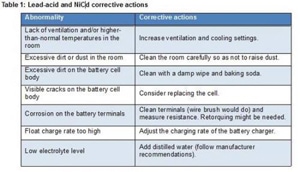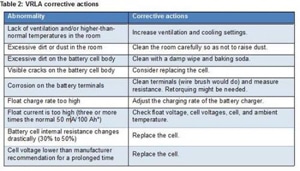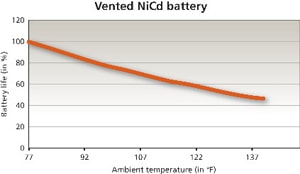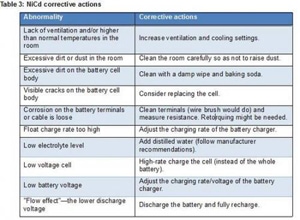November 2018 Articles:
- Birmingham Open House & Training
- Rebuilding Resilence in New York City
- Generator Sizing & Specification
- Design, Maintain, Test Batteries in Mission Critical Facilities
Birmingham Open House & Training
Birmingham Office: 3235 Veterans Circle, Birmingham, Alabama 35235
You’re invited to join us for our open house and training event featuring the Power Experience Tour presented by Generac. Take advantage of this great learning opportunity!
- Generac’s Power Experience Tour Featuring Generac Industrial Units (Diesel, Natural Gas, Bi-Fuel) and Modular Power System Onboard Paralleling Live Demonstrations
- Transfer Switch Demonstrations (ASCO)
- NEC 700 Portable Generator Connection Cabinets (Trystar)
- UPS Technologies
- Power Zone Controller (Generac)
- Remote Monitoring Demonstrations
- Generac Commercial Series (Generac)
PDH CERTIFICATES:
Earn up to 3 Professional Development Hours (PDH)
FOOD TRUCKS:
RSVP to sales@essellc.com by November 16th
Rebuilding Resilience in New York City
Superstorm Sandy was the deadliest and most destructive hurricane of the 2012 Atlantic hurricane season. According to the National Hurricane Center, it was directly responsible for at least 147 deaths in the Northeast United States, Canada and the Caribbean. Sandy made landfall on October 29, 2012 and left a trail of destruction in its wake. The storm flooded numerous roads and tunnels, blocked transportation corridors and deposited extensive debris along the way. Tidal surges over 12 ft. above normal created catastrophic damage. Around 60,000 residents of New York City public housing were affected by the storm.
“We have 33 developments that were severely impacted,” said Joy Sinderbrand, vice president of the Recovery to Resiliency program at the New York City Housing Authority (NYCHA). “Some had 4 ft.-high piles of sand strewn across parking lots, cars were knocked out of place, compactors destroyed, basements filled entirely with water and in some cases first floor apartments also filled with water.”
Sinderbrand said some people were without electricity for three weeks or more, meaning they lost access to elevators, heat, hot water and ultimately peace of mind. “Following that NYCHA did work on an emergency basis,” she said. “Over 90%, or over 300 developments, had some kind of damage. The efforts to get these buildings back online were done with as much urgency as possible.” Sinderbrand said they brought in temporary generators and boilers to help with the problem, but she said that was not a long-term solution.
To help the relief efforts, NYCHA sought funding from the Federal Emergency Management Agency (FEMA) for permanent repairs and infrastructure upgrades that would help ensure the safety of New York City residents. FEMA ultimately awarded NYCHA a $3.2 billion grant for their Recovery to Resiliency plan. “NYCHA fought tooth and nail for every dollar,” said Sinderbrand. “The $3.2 billion from FEMA is the largest single grant of its kind in history.”

A project this size requires key partnerships. NYCHA teamed up with Navillus Contracting, Lakhani & Jordan Engineers,Kanta Electric and Generac Industrial Dealer Central (IDC) Huntington Power Equipment.
Huntington Power won NYCHA’s bid to procure backup generators with its proposal of 327 Generac Industrial Power natural-gas-fueled generators for the application, citing how easy it is to work with compared to diesel fuel and it environmental friendliness.
“Diesel fuel requires constant maintenance to be considered a reliable fuel source, and refueling during an extended outage can be challenging,” said Keenan Nolan, sales engineer, Huntington Power. “During Superstorm Sandy, New York City experienced power outages for as long as 15 days. Natural gas generator owners ran with no issues while diesel clients quickly ran out of fuel, or the fuel was unreliable and they shut down and had no power.”
A challenge for the project has been that every building is different. “NYCHA has buildings of all different sizes,” said Harshad Lakhani, president, Lakhani & Jordan Engineers. “Some are seven stories and some are 24 stories. Some have 100 apartments while some have over 200. Since we were working on multiple sites with dozens of different buildings, we needed to specify generators ranging from 200 kW to 1000 kW.”
Lakhani said Generac was able to meet all the requirements they needed. “Generac was the most favorable when it came to size, service and obviously the bottom line dollars,” he said. “Generac has a superb program to size the generator for one individual building or multiple buildings, and we absolutely received all of the help and everything we needed to make sure that our building documents were complete.”
Generac Industrial Power and Huntington Power worked to meet substantially lower sound levels of select application sites. Rooftop and raised pad installations were specified to keep all units above the new floodplain levels, minimize footprint requirements and avoid disturbing residents during generator operation. “You are 100% guaranteeing no interaction with the water,” said Vasilios Mastoras, product manager, Navillus Contracting. “You want to install all of your mechanical systems in the highest elevations you can, and to meet code it needs to be higher than the flood plain. If the water comes, they won’t be underwater. Nothing will rot, deteriorate, or fail.”
To further ensure that NYCHA’s diverse needs and the complexities of each application site were met, contractors involved in the project laid out plans for a number of applications featuring single-generator as well as paralleled generator solutions. Generac’s Modular Power Systems (MPS) eliminated the need for third-party switchgear previously required by traditional paralleling systems.
“We design each project individually, and we needed paralleling systems when we needed larger generators,” said Lakhani. “We paired two 500 kW generators to produce 1000 kW of power.” These MPS solutions were selected to manage the noteworthy task of meeting natural gas fuel pressure requirements at 7 in. of water column while bringing as much as 1000 kW online in less than 10 seconds during a power outage.
Once the requirements of each site were identified, contractors and Generac Industrial Power staff worked to produce specialized solutions incorporating a variety of unique features. These included vibration isolators, multiple breakers and U.S Environmental Protection Agency (EPA)-certified engines to support nonemergency operation capabilities if local demand response programs are initiated. Demand response will provide NYCHA with a byproduct revenue stream. “The utilities pay NYCHA when there is a need for buildings to come off the grid,” said Sinderbrand. “That money will fund the maintenance of these generators and will allow NYCHA to continue with the safety program.”
During the project, Generac has proven to be a valued team player. “Whenever we have a question or a need, Huntington Power and Generac are right there to help us,” said Paras Kapadia, project manager, Kanta Electric. Lakhani said his firm would absolutely work with Generac and Huntington Power again. “We are actually specifying Generac on other projects as we speak,” he said. “We know the product very well, we know the staff very well and we have the majority of the information that we need already at our fingertips.”

“Businesses in New York City can be more prepared for natural disasters by investing and hardening their building’s infrastructure,” said Nolan. “NYCHA is on the forefront of this, and the next time a superstorm hits, NYCHA public housing developments will be well prepared to withstand the extended outage.”
Thanks to FEMA’s funding and the collaborative efforts of NYCHA, Generac Industrial Power and Huntington Power Equipment, these flexible and innovative solutions are helping NYCHA not only replace its pre-existing infrastructure, but also increase New York City’s resiliency one apartment complex at a time.
“This is about really having the infrastructure in place so that our residents know that if there is an emergency, a natural disaster, that they will be safe,” said Sinderbrand. “They will be safe to come back to their homes and they will have access to their homes, and that is something we can’t put a price on.”
Generator Sizing & Specification
This presentation is designed to educate consulting specifying engineers regarding the various factors that influence the sizing and selection of a generator set, and how familiarity with these factors can contribute to more economical and reliable facility designs. The presenter discusses NEMA MG 1-2016: Motors and Generators standards for generators used in standby, prime, and continuous power applications. The speaker considers assumptions that sizing programs from the manufacturer use default values—such as starting and running power factor, motor starter types, motor code, etc.—and their implications in terms of generator sizing.
During this webcast, the presenter compares various starting methods including across-the-line starting and soft-starting solutions. Load sequencing, also known as load steps, are investigated and discussed. Intermittent loads, such as air conditioners and compressors, are reviewed and considered, including the implications when specifying generator sets.
Presenter Nicholas Paolo, responded to questions not answered during the live Generator Set Sizing and Specification webcast on April 12, 2018.
Question: If I have only 30% load on a generator, what could be done to allow the genset to run for a period of time?
Nicholas Paolo: A load bank could be added to the installation to add additional load to a diesel generator set so the engine reaches the recommended operating temperature or minimum load recommended by the manufacturer.
Q: I need to size a generator for a small free-standing emergency department building (11,000 sq ft). The diesel generator needs to serve the CT scan machine, the MRI scan machine, and the general X-ray machine. Does the software permit this modeling?
Paolo: These loads could be entered as MISC loads but the starting/running kVA/kW, voltage dip requirements, and harmonic details would need to be known for accuracy.
Q: Is there a standard range for voltage dip?
Paolo: Yes, 15% to 30% is a common voltage dip requirement, which will be defined as the requirement of the loads but the requirement can be higher than 30% or lower than 15%.
Q: Per which NEMA code did you quote regarding 80°C?
Paolo: NEMA MG-1.
Q: Please explain why the fire pump running (facility on fire?), yet other loads, such as air conditioning units are allowed to start?
Paolo: This ultimately comes down to how the system is designed and if there are controls in place to shed the air conditioner if the fire pump is running or called to start.
Q: How do you specify generators across different manufacturers (equivalents)? Often, kW from manufacturer A isn’t the same size of manufacturer B.
Paolo: If the kW from different manufacturers isn’t the same, a sizing exercise from each manufacturer can be performed to determine the size of genset selected or a spec can be written with the loads defined and the party bidding the job is required to provide a sizing report. For example, some manufacturers provide 2,800 kW generator sets as opposed to 2,750 kW generator sets so both options could be listed in the spec or the bidder is required to confirm compliance via a sizing report.
Q: Is there a free genset sizing tool?
Paolo: Yes.
Generac: See our Free Power Design Pro genset sizing and design tool. It features load modeling, true harmonic analysis, load shedding scenarios, and much more.
Q: What is the difference between an “emergency” generator and a “standby” generator?
Paolo: International Organization for Standardization (ISO) 8528-1-2005: Reciprocating internal combustion engine driven alternating current generating sets—Part 1: Application, ratings and performance defines emergency standby-, prime-, and continuous-rated generator sets. NFPA 70-2017: National Electrical Code (NEC) references emergency and standby systems.
Q: Does the temperature rise rating of the alternator affect the generator’s ability to handle harmonics?
Paolo: It can. For example, a 176°F (80°C) alternator will have more copper and iron in it because it is “oversized” when compared to a 266°F (130°C) alternator and the 176°F (80°C) alternator can handle harmonics better. Ultimately, a sizing exercise will need to be performed with the loads to determine the size/temperature rise of the alternator required.
Q: Does a UPS-type load require a greater generator capacity than a similar motor load with the same kVA requirement? In in the past, the rule of thumb was 1.5 times the UPS load to assign a generator capacity.
Paolo: Due to differences in UPS technology, we do not recommend using the 1.5 times the UPS load rule of thumb to assign a generator capacity. We recommend to enter the actual UPS load with rectification type, recharge rate, etc., and complete a sizing report.
Q: I usually put HVAC units in step 2, because most have an automatic time delay, if running. Is this OK?
Paolo: If the time delay will allow for the generator set to recover to stable voltage/frequency and the HVAC unit will start in step 2 not 3, 4, 5, etc., then yes.
Q: Is it possible to select genset size as per total running kW, max starting kW, and cumulative step load rather than going with size being suggested by generator sizing tool?
Paolo: We recommend using a generator set sizing tool to address power factor/kVA, nonlinear loads, and harmonics in addition to your values listed.
Q: Is it cost effective to add variable frequency drives (VFDs) to reduce generator sizes?
Paolo: This would be an engineering economics exercise where the cost of the VFD must be compared to the savings in generator set size.
For the most accurate genset sizing and design, see Generac’s Free Power Design Pro tool. The cloud-based tool makes accessing and sharing projects simple. Contact us with any questions.
Design, Maintain, Test Batteries in Mission Critical Facilities
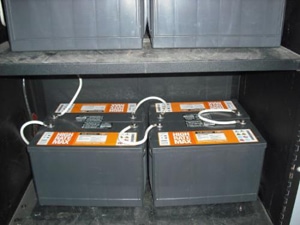
When designing electrical systems, maintenance is an important factor, specifically in deciding what battery to implement. Maintenance includes not only the cost of replacement of a battery cell, but also the accessibility of the battery system, the ease of disassembly and reinstallation, the frequency of service, and the conditions needed in the space (temperature, humidity, etc.).
The goal of maintenance is to prolong the life of the batteries and to make sure the batteries perform as designed. Inspection is done to catch any abnormalities that could impact battery performance as well as long-term life expectancy. To this end, it is important to place the batteries in an environment that agrees with the manufacturer’s recommendations. [subhead]
Battery types
There are several types of batteries used for providing power to electrical systems. The most popular types of batteries being used nowadays are lead-acid and nickel-cadmium (NiCd). NFPA 110: Standard for Emergency and Standby Power Systems defines two types of lead-acid batteries:
Valve-regulated lead-acid (VRLA): A lead-acid battery consisting of sealed cells furnished with a valve that opens to vent the battery whenever the internal pressure of the battery exceeds the ambient pressure by a set amount.
Vented (or flooded): A lead-acid battery consisting of cells that have electrodes immersed in liquid electrolyte. Flooded lead-acid batteries may have a provision for the user to add water to the cell and are equipped with a flame-arresting vent, which permits the escape of hydrogen and oxygen gas from the cell in a diffused manner such that a spark, or another ignition source, outside the cell will not ignite the gases inside the cell.
Although NFPA 110-2010 recognizes the usage of NiCd batteries for emergency systems, no definition is provided for such batteries. A definition can be found in IEEE 1106-2015: Recommended Practice for Installation, Maintenance, Testing, and Replacement of Vented Nickel-Cadmium Batteries for Stationary Applications:
Partially recombinant nickel-cadmium cell: A vented NiCd cell providing an internal means for the recombination of internally generated oxygen and suppression of hydrogen gas evolution to limit water consumption, typically operating with a recombination efficiency of 90% or higher.
Battery uses
Mission critical facilities are not only the buildings that are critical to human life, such as hospitals, but also are facilities that have a great economic impact. In the critical systems (or processes) of these facilities, many methods are employed to mitigate the risk of power outages. But, almost always, the risk mitigation relies upon batteries. Uses include:
Uninterruptible power supply (UPS) systems: Batteries are used to back up power where UPSs are involved. While the power is processed and converted through the UPS to the load, the batteries are kept charged to provide the much-needed power to the critical system when normal power is out. Even though standby generators are most likely used as backup power, the batteries provide the critical power needed until the generators are able to receive load. Standby generators: Batteries are used to provide the initial crank to the generators as well as power the generator controls.
Controls: Batteries also are used to back up controls, especially when medium-voltage distribution is found throughout the facility. Nowadays, the operation of critical systems is more reliant on controls to avoid nuisance tripping and to enable fast-acting protection.
Emergency systems: Batteries are widely used to back up life safety systems, such as exit lights. Exit lights normally are backed up by a 90-minute battery to allow people to recognize the way out of the building in case of a life-endangering situation. All of the above-mentioned uses (UPS, generators, and controls) could be part of an emergency system as well.
Inspection
The maintenance of the batteries in mission critical facilities is especially important. When maintained regularly, batteries will perform according to design to support the critical systems, ensuring the continuance of power. Maintaining the batteries also elongates their life, resulting in lower operation costs. But the first step of maintenance is to inspect. By first inspecting and then assessing, we can develop a plan for remediation.
Let’s look at each battery type separately. IEEE has developed separate standards for just this reason.
Vented lead-acid: The most routine inspection for this type of battery is a visual inspection. IEEE has developed a standard, 450-2010, IEEE Recommended Practice for Maintenance, Testing, and Replacement of Vented Lead-Acid Batteries for Stationary Applications. This standard is a very good guide for the operations staff to create a maintenance procedure.
The monthly inspection, as recommended in the IEEE 450-2010 standard, includes the following:
A visual inspection of:
- The general condition of the area. The area (room) should be as clean as possible so that dirt or excessive dust does not cover the battery cells. Unclean equipment is harder to assess during a visual-only inspection.
- The battery cells for cracks. This step is important because a crack in the cell’s outer shell could allow the electrolyte to leak and the battery to discharge.
- The electrolyte levels. A significant drop in the electrolyte level means that the specific gravity of the electrolyte has increased. A greater specific gravity would impact the life of the battery.
- The battery terminals for corrosion. Corrosion of the battery terminals will increase the resistance of the connection, thereby decreasing the amount of current supplied by the battery system.
A measurement of:
- The float voltage at the battery terminals. If the battery system performs at a float voltage outside the manufacturer’s recommended range, the battery’s life expectancy would be adversely affected.
- Room or area temperature and ventilation. The temperature is important because it impacts battery-life expectancy. Ventilation is important because proper movement of the air mitigates high concentrations of hydrogen, which is a byproduct of chemical processes in the battery cells. High concentrations of hydrogen in the air significantly increase the risk for explosions.
The IEEE 450-2010 recommendation for monthly visual inspection is just a general recommendation for any type of facility. NFPA 110 requires weekly visual inspections for battery systems employed in emergency and standby systems.
The recommended quarterly inspection includes the following:
A measurement of:
- The voltage of each cell. Lower-than-recommended (by the manufacturer) voltage levels could have an adverse affect on the life expectancy of the battery.
- The specific gravity of the cells’ electrolyte. One needs to keep in mind that specific gravity of the electrolyte increases in a full charge. It would be best if three measurements are taken: one on top, one in the middle, and one on the bottom of the cell. The average of the three values is the value to be used. If taking three measurements is not possible, taking a reading as close to the middle as possible is best. Note that it’s not necessary to measure the specific gravity of each cell in the battery string, rather only about 10% of the cells.
- The electrolyte temperature of a few cells. If we have a 125 V battery system, we’d have 60 cells. It would suffice to check the temperature of six of them. The desired temperature is the one recommended by the manufacturer. If the electrolyte is at a higher temperature, a higher float current is required to maintain the cell voltage. Too high of a charging current could adversely affect the electrolyte composition, as more of the hydrogen and oxygen is being gassed. On the other hand, the lower temperature causes a smaller floating current, which in turn, slows the charging process.
There is also a yearly inspection that applies the quarterly inspection to all the battery cells, which is, therefore, much more involved.If abnormalities are observed during these inspections, there are corrective actions that can be taken. See Table 1 for some common corrective actions.Of the abnormalities mentioned in Table 1, the room temperature and ventilation usually are set during the design. Total cost of ownership analysis is usually done by taking into consideration the optimal conditions so that the battery life is longest. The rule-of-thumb correlation between ambient temperature and lead-acid battery life, be it vented or VRLA, is as follows: battery life decreases by 50% for every 15°F above the normal temperature, which is 77°F. Figure 1 shows this correlation.
Battery life
Determining the battery life is important, especially in mission critical facilities. With proper maintenance, battery life could be predicted accurately, thereby avoiding any downtime. The most important factors affecting battery life are:
Ambient temperature:
- Keeping the temperature at 77°F is optimal.
Maintenance:
- Keeping the cell temperature in check; large temperature differences among the cells (greater than 3°F) will affect battery life.
- Keeping the cell voltage in check. The following should be corrected:
- Voltage below open cell voltage + 0.06 V
- Voltage above open cell voltage + 0.1 V (or 0.05 V for lead antimony).
Cycling:
- The more discharges occur, the shorter the battery life.
Chemical components:
- Vented batteries can be lead-calcium, pure-lead, lead-selenium, or lead-antimony. All the outside factors affect the battery life differently, depending on the chemical composition of the battery.
VRLA batteries
VRLA batteries currently are very popular. They are known as “nonmaintenance” batteries, mostly because of the fact that they are sealed and employ a “recombinant technology.” The fact that the battery is sealed ensures the preserving of the electrolyte, no matter the position of the battery cell (you can even turn it upside down). Recombinant technology means that the oxygen released from the positive plate ends up in the negative plate, where it recombines with hydrogen and turns into water. This process preserves the battery water.
Just as it has for vented batteries, IEEE has developed a standard, 1188-2005, IEEE Recommended Practice for Maintenance, Testing, and Replacement of VRLA Batteries for Stationary Applications.
Even though VRLA batteries are sealed, there are always dangers associated with installing and maintaining batteries. Only trained and knowledgeable personnel should work around batteries. In addition, unauthorized personnel should not have access to the batteries. The battery area should not be used as storage for tools or anything else. All personnel should use personal protective equipment, such as goggles, gloves, and safety shoes, while working on batteries
Just as with vented batteries, inspection is an important part of maintenance. IEEE recommends monthly, quarterly, and yearly inspections. But this recommendation is for general use. For mission critical facilities or processes, there needs to be a weekly inspection as well.
The monthly inspection for VRLA batteries is more or less the same as the one for vented lead-acid batteries. This inspection includes the following areas:
- The general condition of the area. The area (room) should be maintained as clean as possible so that dirt or excessive dust does not cover the battery cells. Unclean equipment is harder to assess during a visual-only inspection.
- The battery cells, looking for cracks. This inspection is important because a crack in the cell’s outer shell could allow the electrolyte to leak.
- The battery terminals for corrosion. Corrosion of the battery terminals will increase the resistance of the connection, thereby decreasing the amount of current supplied by the battery system.
A measurement of:
- The float voltage at the battery terminals. If the battery system performs at a float voltage outside the manufacturer’s recommended range, the battery’s life expectancy would be adversely affected.
- Room or area temperature and ventilation. The temperature is important because it affects the battery’s life expectancy. Ventilation is important because proper movement of the air mitigates high concentrations of hydrogen, which is a byproduct of chemical processes in the battery cells. High concentrations of hydrogen in the air significantly increase the risk for explosions.
- The float current of the string. A high float current would adversely affect the battery life, as it increases the temperature in the cell.
The quarterly inspection includes measurements of the following:
- The cell’s internal Ohmic values. Care should be taken to use the same method each time so that a credible baseline is set. If the Ohmic values change drastically (30% to 50%), a battery replacement might be warranted.
- The temperature of the negative terminal of each cell. A higher temperature than other cells could indicate a higher charging current. Higher temperatures adversely affect the battery life, as shown in Figure 1.
- Cell voltages. Both high and low voltages could be problematic. Prolonged low voltage-lower than the manufacturer’s limit-without an increase in temperature could indicate an internal problem. Prolonged high voltage-higher than the manufacturer’s recommended limit-could impact the battery life by accelerating the dryout.
The yearly inspection is then limited to measuring the following:
- Cell-to-cell and battery terminals resistance. If the value is 20% or more than the baseline, corrective actions should be taken, such as cleaning the connections and retorquing.
- Battery-charger ripple current, which could impact the battery temperature (should not be more than 5°F over the ambient).
Table 2 shows typical steps to be taken when adverse situations are witnessed.
Vented nickel-cadmium batteries
Just like the name suggests, these batteries are a vented (flooded) type, where the positive plate is made of nickel hydroxide and the negative plate is made of cadmium hydroxide. These batteries are often preferred because they:
- Have a high cycle count
- Can be charged very fast
- Have a long shelf life.
However, these batteries have the following drawbacks:
- The NiCd batteries have lower voltages (1.2 V instead of 2 V for lead-acid batteries), which could be a problem for space. For a 120 V system, we would need 60 lead-acid cells, but 100 NiCd cells.
- Cadmium is toxic, so these batteries are not easy to dispose.
- NiCd batteries have memory, which means they remember the capacity delivered the last time and don’t deliver more than that. Because of this, they need to be discharged to lose the memory and then fully charged again.
IEEE has developed a standard for this type of battery: IEEE 1106-2015, Recommended Practice for Installation, Maintenance, Testing, and Replacement of Vented Nickel-Cadmium Batteries for Stationary Applications.
As with other kinds of batteries, personal protective gear, such as goggles, gloves, and aprons, are recommended when servicing the NiCd batteries.
IEEE 1106-2016 recommends a quarterly inspection, which is the same as the vented lead-acid batteries’ monthly inspection:
A visual inspection of:
- The general condition of the area
- The battery cells, looking for cracks
- The electrolyte levels
- The battery terminals for corrosion.
A measurement of:
- The float voltage at the battery terminals
- The float current
- Room or area temperature and ventilation.
There is a semiannual inspection as well. This inspection encompasses what the quarterly inspection requires and adds cell voltage measurements. The yearly inspection also requires looking at the condition of the cable connections and measuring the resistance.For a list of simple corrective actions to a few abnormalities, see Table 3.The NiCd batteries can be submitted to a high-rate charge. Normally, they are charged at around 1.4 to 1.47 V per cell, but in a high-rate charge, the voltage can go to 1.55 V for a maximum of 1.8 V.A NiCd battery is more tolerant of higher temperatures. Its lifespan reduces by 20% when operating at temperatures 50°F above the recommended 77°F, while the lead-acid battery takes a harder hit, around 50%. The NiCd battery life and temperature correlation is shown in Figure 3.In Table 3, a few corrective actions for some simple abnormalities are shown.NiCd batteries, if operated at 68 to 77°F, can last a long time. Their capacity drops slowly, reaching 80% after 20 years. Even after that, they can be used in less-demanding applications.
The importance of design
Maintenance is especially important for mission critical systems because of the importance of the reliability of these systems. Indeed, maintenance does not start when problems with the equipment arise; rather, maintenance starts with the design of the systems. The design professional always needs to keep maintenance in mind when designing electrical systems, and the same goes for battery systems.
Keep the following tips in mind when designing and specifying batteries in mission critical facilities:
•Decide early, in conjunction with the owner, what type of battery to use. Choosing the battery type early helps with nailing down the design and operation conditions of the battery system.
•Design a cooling system in accordance with the manufacturer’s recommendations. As mentioned, the ambient temperature plays a big role in the battery lifespan.
•Design a ventilation system to properly refresh the air in the area to not allow hydrogen concentration in the area.
•Design proper clearances around the battery racks.
•Design proper containment in case of a leakage of the battery solution.
After the system (or facility) is up and running, it is critical to make sure that the design conditions mentioned above are enforced. It is also critical to follow IEEE recommendations for weekly, monthly, and yearly inspections (add a semiannual inspection for NiCd batteries). A visual inspection, as simple as it might seem, is very important to catch early what could become a serious malfunction. It is best for the maintenance team to prepare a standard form for each type of inspection. These forms could have boxes for check marks and spaces for notes where certain conditions observed can be explained. Having a log of the inspections helps in tracking certain conditions and compiling a plan of action if the conditions deteriorate.
